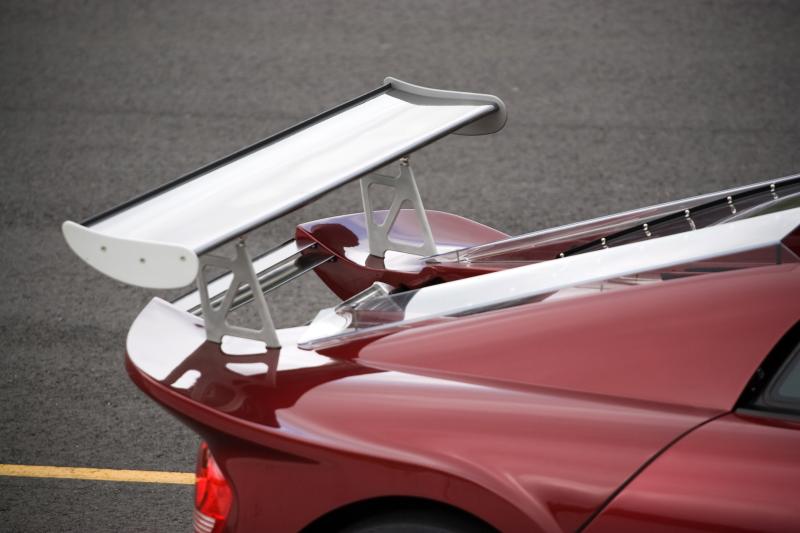
A rear spoiler on a car is usually a sign of sportiness and performance. The actual purpose of spoilers is to affect the flow of air over the car to increase the car's aerodynamics and reduce drag. However, many spoilers are added for the sake of appearances and have little performance value.
Rear spoilers are commonly referred to as wings, though this is incorrect. A rear wing, while similar in appearance to a spoiler, is designed to generate downforce to counteract the lift that may occur when a car moves at high speeds. Wings are common on race cars, but would have little practical purpose on passenger cars. Rather than produce downforce, spoilers are designed to spoil, or disrupt, the flow of air that would increase a car's drag. Because they keep drag to a minimum, rear spoilers may also increase fuel economy by reducing the amount of work the engine has to do in order to push the car at high speeds/
As a moving car passes through air, that air moves relative to the car in what is known as a laminar flow. Laminar flows occur when a fluid -- gas or liquid -- such as air passes a solid body in smooth layers. At points where the streamlined flow of air is disrupted, a turbulent flow occurs. A self-propelled vehicle, such as an automobile, will expend considerably more energy fighting against turbulent flows, in addition to experiencing a rougher ride. Rear spoilers can be engineered to transform potential turbulent flow into laminar flow by changing the angle at which air flows off the roof of the car and towards the spoiler. The change, though it occurs initially at the rear of the vehicle, means that the nose of the vehicle is able to cut through the air more effectively. When measured as a drag coefficient, the negative effects of air flow will decrease with more laminar flow.
Rear spoilers are made from a variety of materials. Most factory installed spoilers are made of acrylonitrile butadiene styrene plastic. This is the same material used for plastic body panels and is lightweight and inexpensive. These spoilers are generally painted to match the body of the car and appear to be an integral part of the design. Fiberglass is another material option, but has a higher cost than plastic.
Aftermarket spoilers often are constructed of lightweight carbon fiber, as are many other aftermarket auto accessories. This strong, light material is ideal for automotive applications but costs far more than traditional materials. Metal spoilers -- usually lightweight aluminum -- also are available, though products advertised as metal spoilers are often, in fact, metal wings.
Rear spoilers are most useful on sports cars, where high speeds are more common and the angle of drop-off between the roof and the rear of the car may be steep. Sports cars often have larger engines, and the increased fuel efficiency that results from a spoiler may make them more marketable. Additionally, a spoiler may be seen a symbol of performance and is expected on certain models. One may find nonfunctional spoilers on any number of cars, from compact sedans to pickups and SUVs.
As rear spoilers have become more common, automakers have begun to include them on cars for no purpose other than enhancing appearance. Rear spoilers sometimes incorporate the center brake light, thus serving another aesthetic purpose and solving that particular design issue.
Since spoilers were once common only on sports cars, where improved fuel efficiency was difficult to obtain, many car buyers associate them with performance and speed. Adding a spoiler to a practical car or including it as part of an optional sports package allows automakers to market their cars as exciting and powerful. The same principle applies to other nonfunctional details of many modern cars such as hood scoops, brake ducts and alloy wheel patterns.